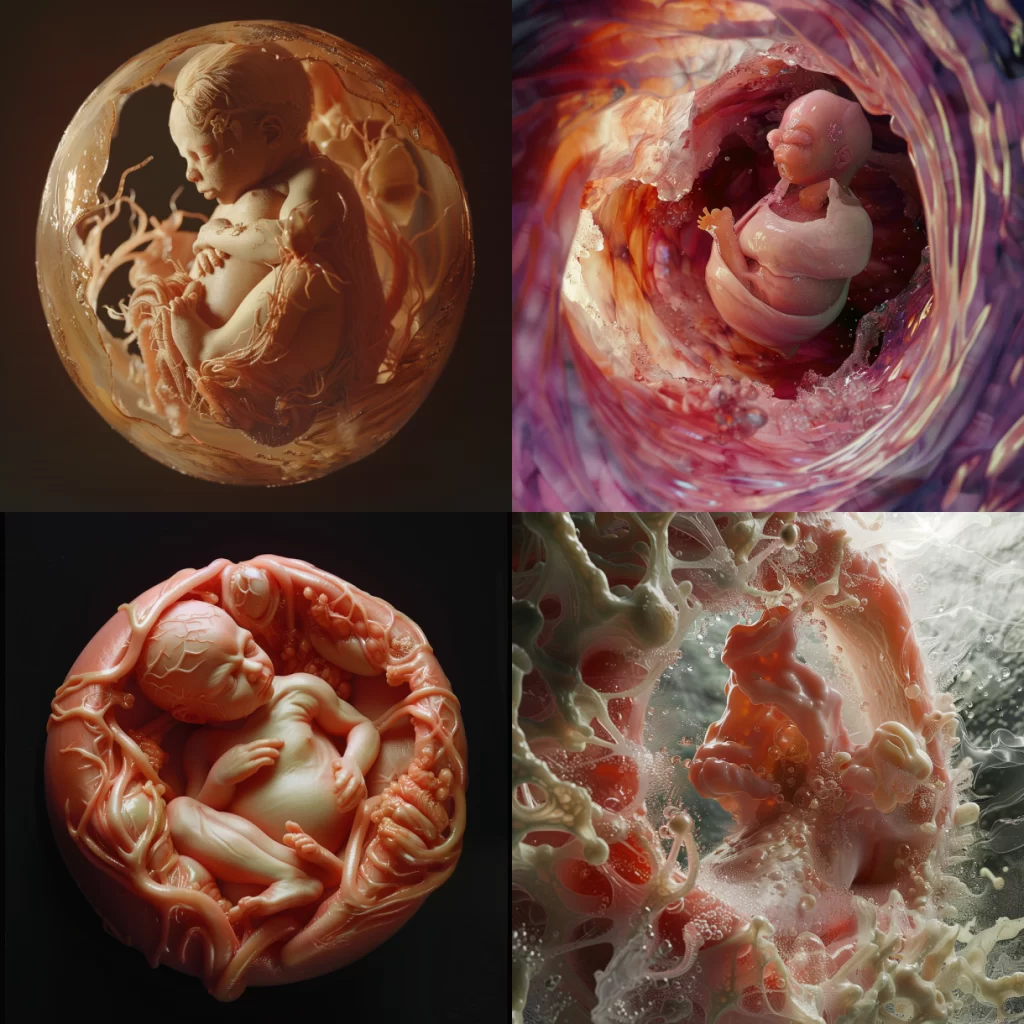In a previous post, I spoke about taking a response from someone describing what their womb would look like if it were a place and turning that into a prompt for AI.
As a refresher here is the prompt:
a photorealistic image of a room which looks like a lush garden inside which is representative of the uterus of someone with endometriosis
And here is the result:

Image Description
AI generated imagery of four hyper realistic photos of an interior design for the dreamy fairy tale bedroom in paradise, pink and green color palette, a lush garden full with flowers and plants surrounding it, magical atmosphere, surrealistic
Honestly, I wasn’t expecting the results to be as close to what was in my mind as this. I was really impressed. I’m intrigued to know which part of these repsponses represents the “endometriosis” section of the AI prompt.
I really like option 3 because the round shape of draped pink fabrics sort of looks like a womb or vaginal opening. It’s definitely my favourite although I’m loving weird abstract furniture that is depicted at the back of option two.
Since I like option three the most, I decided to work on it a bit further.

Image Description
A collage of pink and green floral patterns, vines, and foliage surrounded by lush jungle foliage, with mirrors reflecting in the background. The scene is set at dawn or dusk, creating an ethereal atmosphere. This style blends natural elements with fantasy and surrealism, giving it a dreamy quality in the style of surrealist artists.
Here are examples of subtle variations of the original image
And here are examples of strong variations of the original image.

Image Description
A collage of four images depicting lush greenery, pink drapes, and exotic plants in an opulent setting. The style is a mix between hyper-realistic botanicals and surreal digital art, with vibrant colors and soft lighting creating a dreamy atmosphere. Each element has its own distinct visual narrative within the composition, showcasing a harmonious blend of nature’s beauty and modern aesthetics. This combination creates a visually stunning representation that sparks imagination.
I prefer the strong varations because the garden room looks more overgrown and wild, but still retains it’s beauty which feels closer to what the original response from the participant was saying.
Regardless of my preferences, I think my process will include me using all of these images as previs. I plan to then use 3D software inspired by all of the imagery seen here to create the scene. I’ll take features from all of the images as well as my own ideas that are closer to the original response from the participant to bring their “womb room” to life.
I’ll be honest though, the 3D production is exciting but also scary. I have a bit of imposter syndrome of whether I can actually deliver this. I sort of feel inferior to what Midjourney was able to create.




